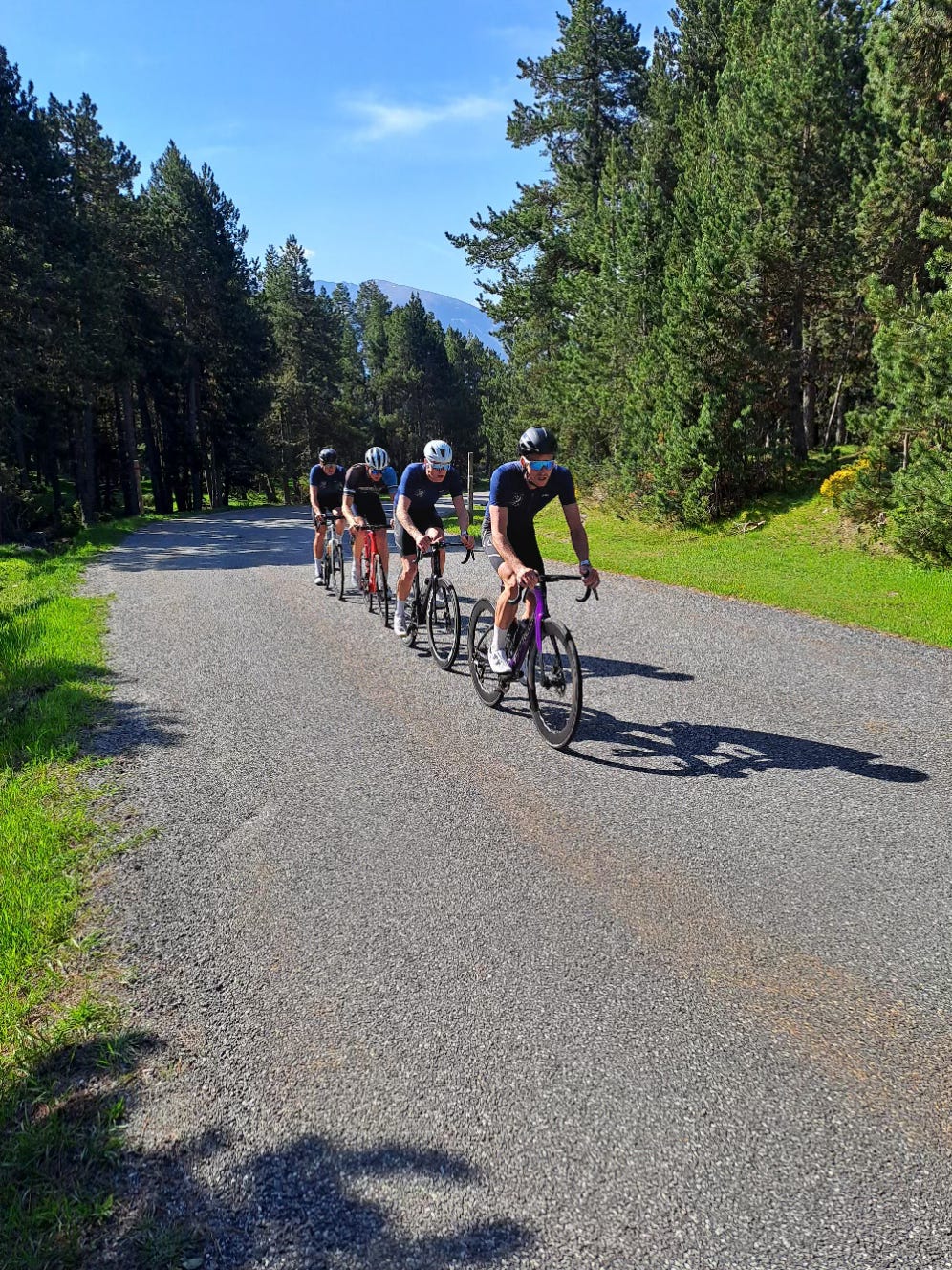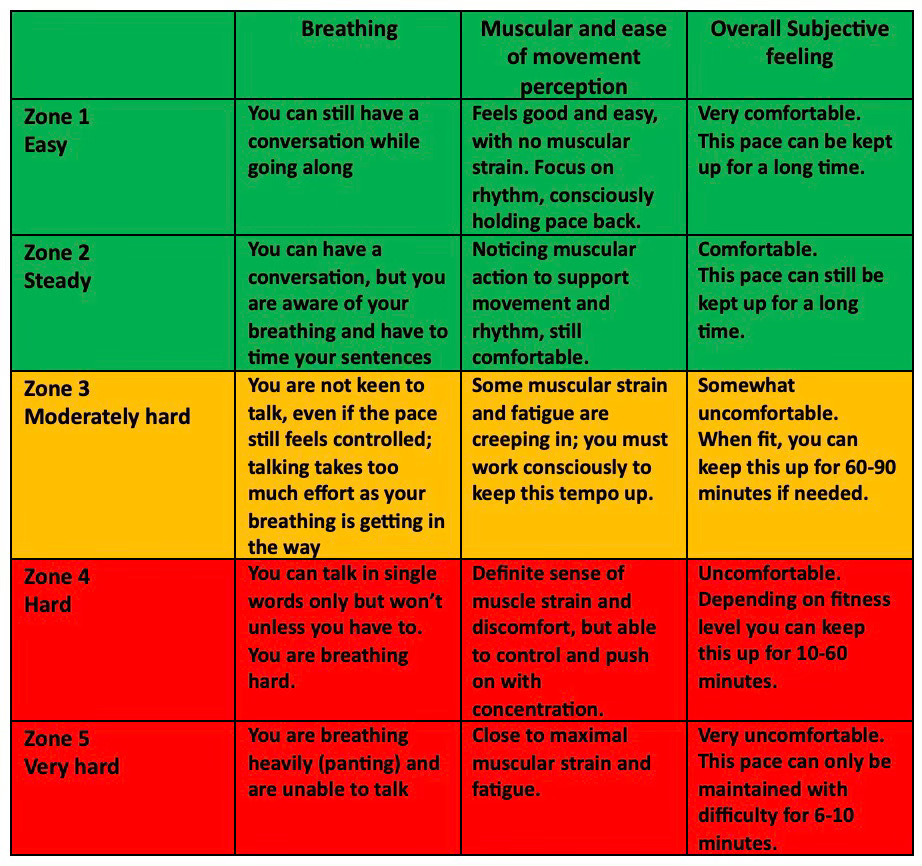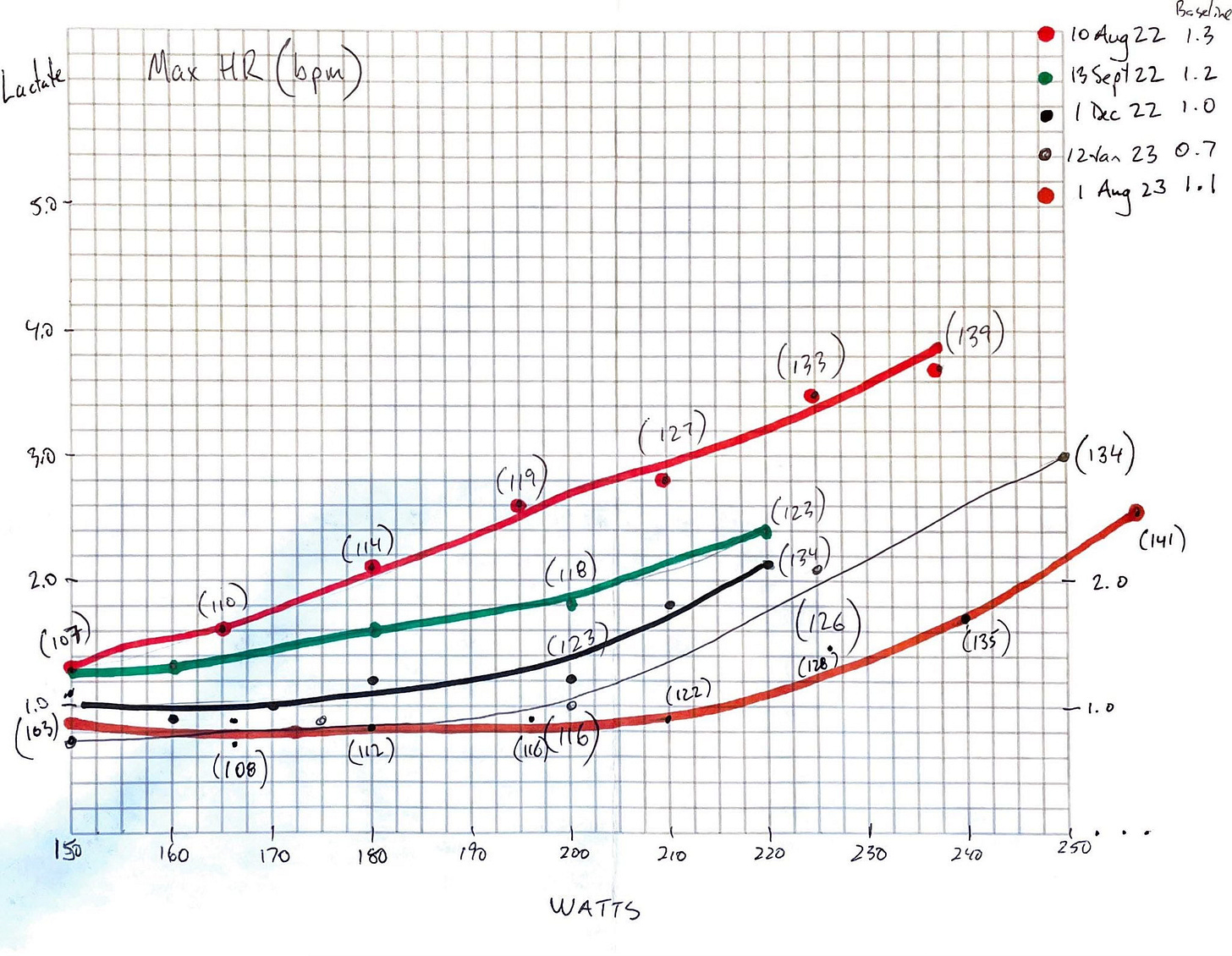Once again, we’re fortunate to have Julie joining the writing team. During her elite career, Julie crushed more than a few dreams with her cycling prowess. Following her elite career, she’s helped athletes of all abilities improve their bike times.
To open, we’re going to share our individual philosophies with respect to what bike training can do for you.
After that, we will get into the nuts and bolts of bike training.
As you read in the running chapter, in a few areas, John and Gordo have different opinions. History tells us that the “truth” in those circumstances will depend on your individual situation.
Gordo’s Intro on Developing Metabolic Fitness
I’d like to use this section to make my case for how amateur athletes can use the bike to enhance their physiology.
To start, I’ll focus on the amateur athlete with a desire to become a runner.
What makes becoming a runner so tough?
Small, or no, Green Zone Capacity
Heart Rate Pops Immediately
Injury Risk
Difficulty Managing Intensity
Slower Recovery Profiles
Many of the above also apply when we learn how to skate, ski, row or swim. Contrast those sports with cycling, particularly on flat ground.
Green Zone Immediately Available
Accurate Intensity Targeting
Low Biomechanical Constraints
Ability To Quantify & Safely Ramp Load
Faster Recovery Profiles
Whether you are a runner, multisport athlete, or another type of endurance athlete… the first use case for the bike is improving metabolic function. Metabolic function being defined as the ability to efficiently transform food into velocity.
I recommend you start by getting a clear idea of Baseline Effort => the dividing line between Zone 1 and Zone 2. What we have defined as the first lactate threshold.
In Lactate Testing Essentials we outlined the Submax Test. It is a progressive workout where you gradually increase effort based on heart rate or power.
In his article on the “220-Age” Formula, John shared a progressive workout he uses in his medical practice to do the same thing.
Both methods will be effective for helping you set Baseline Effort.
Even if you don’t have access to lactate testing… Do The Test! Instead of measuring lactate, use John’s Subjective Perception table (below) and estimate Baseline Effort.
After you’ve estimated your zones from the test, use them in the real world for a couple weeks.
Remember our tips from Training Zone Essentials.
Skew Errors Left - undershoot expectations
Back It Up - today should not compromise tomorrow
Beware Of Zone Creep - the tendency to gradually lift effort
The overall goal is a long-term shift in physiology.
We will see this shift by:
More speed/power at a given heart rate.
Higher speed/power at Baseline Effort.
Improved capacity to maintain Baseline Effort.
Faster recovery from training.
By using the gears on your bike, and keeping the route flat (initially) you will be able to easily adjust your work load as fitness improves.
Start By: Dialing In Baseline Effort
Use: Submax Testing
Apply: Baseline Effort Via Supplemental Volume
These are long-term adaptations.
Meaning:
It could take a while to see material progress.
Gains will continue for many years.
The chart above shows:
A gradual reduction in lactate produced for a given power output.
An even more gradual reduction in heart rate for a given power output.
Because the athlete was relatively untrained, each test appears to show a “better” result. This is not always the case.
Following illness, or off season, expect to see both heart rate and lactate increase for a given power. A good rule of thumb is to shift power/pace zones down by one level. For example, a pre-illness “Zone 2” effort is likely to be Zone 3 when the athlete returns from training.
Absent illness, or off season, results can appear “worse.”
An example would be a runner focusing more on their main sport and reducing cycling volume.
Another example would be an athlete increasing their Strength Focus in the winter. As we explained in Strength Essentials, there is a trade off between strength and endurance.
Regardless of the cause, when Baseline Performance has reduced, lower the power/effort targets for Green Zone cycling volume.
When you feel Baseline Performance has improved, retest.
John Responds on The Need For Specificity
Gordo’s opening statement is interesting: athletes can improve their physiology through cycling…
Really?
Can a swimmer improve their physiology through biking?
Or a runner?
Physiology is specific to the discipline we train for, and I have learned that biking does not help our swim or run one bit, especially if it is done at intensity. If we do it once a week, as an easy spin or want to do something on our easy day, o.k., but if we do more and do 2 or 3 bike sessions per week, it will get in the way of the other disciplines.
For triathletes, achieving a harmonious balance between the three disciplines is a highly individualized journey. It's a complex process that depends on various factors such as the athlete's background, strengths and weaknesses. This underscores the crucial role of the coach in devising personalized training approaches. The aim is to minimize the compromises between the three disciplines, allowing athletes to reach their maximum performance level in each.
For runners, incorporating an easy spin on the bike once a week can serve as a beneficial ‘recovery session’, replacing another run. This approach was championed by the legendary New Zealand marathon runner, Jack Foster, whose 2:11 world record for over 40’s stood for 16 years. But his innovative use of cycling as a recovery tool on his rest day has not been copied much by runners who came after him.
I don’t think swimmers are helped by specific bike sessions. Interestingly, in The Netherlands, most competitive swimmers use their bikes to get to and from the pool on a daily basis, and we know their prowess in the pool. Perhaps they are onto something….
Bike sessions enhance the physiology needed for biking. Gordo is right that they give us some general aerobic conditioning, but the transfer of that to other disciplines is weak. So, I disagree with the statement that cycling can make a better athlete in every sport.
Gordo’s probably right that it is easier on a bike to control your intensity than running, especially if we are unfit and recovery is also quicker. But this can be circumvented with a walk-jog programme and teaching novices the technique of jogging slowly (as we need to instruct novice cyclists about gear use and cadence).
Julie Connects The Dots
Both John and Gordo make good points. One way to reconcile their views is to think across an athlete’s developmental journey. This journey takes years and decades.
As a coach I’ve had the opportunity to work with runners, and swimmers, who share a desire to improve their main sport. As they progress, there will be times when they are unable, or unwilling, to put in the hours with their main sport. The bike can be a useful tool to enable these athletes to complete more work over time.
Athlete limits present in different forms.
Biomechanical - common in running. Beyond a certain load, the runner falls apart, enjoyment decreases and performance declines.
Psychological - common in swimming. Many swimmers, even great ones, have a weekly limit for how often they’re willing to hit the pool. Riding outside is a fun and engaging way to train.
Variation In Stimulus - while we can train the legs specifically. There’s only so many long kick sets, and long run workouts, we can program for our athletes. The metabolic stimulus from “a long ride” is difficult to recreate in most sports.
Finally, there is what I like to call the “Joy Factor.” Riding outside is fun. These positive experiences influence all aspects of athlete well being.
Keep reading with a 7-day free trial
Subscribe to Endurance Essentials to keep reading this post and get 7 days of free access to the full post archives.










